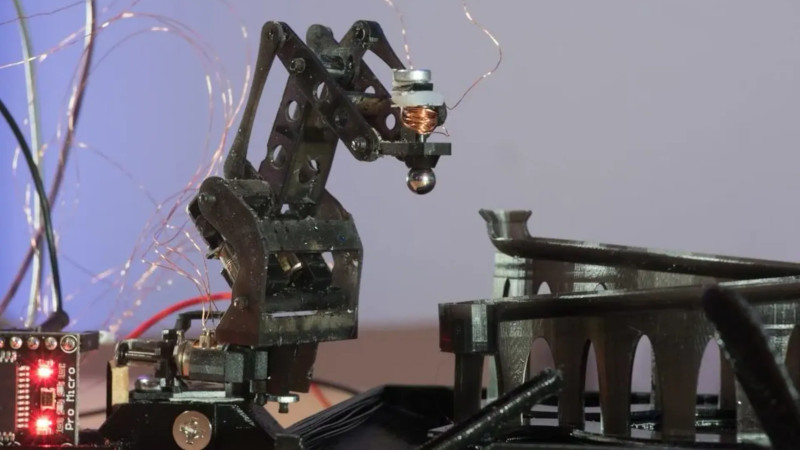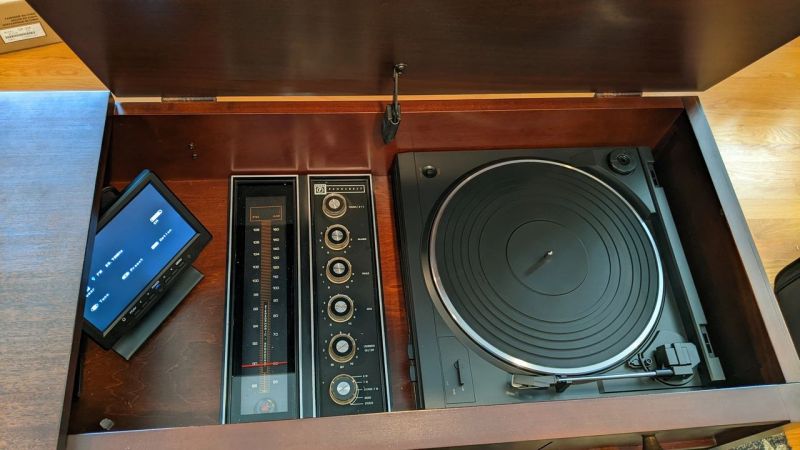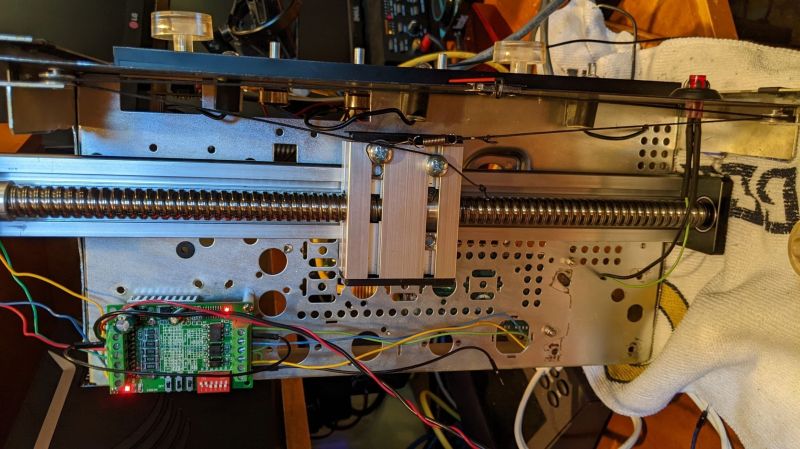The Nerf gun prototype is coming along nicely. The students have tested the launcher up to 120 psi, built a prototype tilt and pan mechanism in Lego, and today hooked up a small reservoir behind the solenoid valve on the barrel to a bigger reservoir using an air hose.
They hope to be able to keep the bigger reservoir up to pressure by occasionally turning on a 12v compressor. The compressor takes 10A and can’t be run for very long at a time (it brings the system up to 120psi from 0psi in about 15 seconds), so they’ll have to run it off a relay. I couldn’t find cheap relays that looked easy to use with 5v control and 12v 10A contacts, but automotive relays are cheap (I found 5 relays and 5 sockets for $5 on Amazon AGT (5 Pack) 30/40 AMP Relay Harness Spdt 12V Bosch Style (40AMP-HRNS)—even with shipping that is only $2.25 each for relay plus socket). The relay can be controlled by half an H-bridge of the Hexmotor board. The other half of the H-bridge controlling the solenoid should be fine, as we never need to run the compressor and fire at the same time—we can stop the compressor for a fraction of a second while firing.
They want to have the running of the compressor be automatic, which would require a pressure sensor. The Freescale MPX5999D would work and is one of the few sensors I’ve seen with a large enough range, but I’m not sure how to mount it. Standard tire-pressure monitoring sensors and transmitters are cool, but I don’t know if they go up to high enough pressures and I don’t know how to interface to their transmitters—that is almost certainly a more expensive solution. Honeywell has a differential sensor with ports that will go to ±150psi, which may be easier to connect up, but it costs about twice as much and is uncompensated and unamplified: I suspect it would be a lot fussier to work with than the Freescale part. I’ve ordered a sample of the Freescale part, and read their AN936 application note on mounting (epoxy is your friend).
It turns out that the relays may be useful for other functions, like a linear actuator for the tilt mechanism. Two relays can be controlled from one H-bridge to get forward-backward-stop action on motors up to 30 amps (but no PWM!). Unfortunately, 12v linear actuators seem to run $100 and up, which is more that I want to spend on a single part. I may ask the students to redesign—either building their own lead-screw mechanism or coming up with a different tilt mechanism. I don’t think a simple servo motor will do—the beefiest one I have claims only 69 oz-in (0.49 Nm) of torque, which I don’t think will be enough to tilt the gun, even if they can get the hinge very close to the center of gravity.
Another problem has come up: getting more darts. We have 5 darts that fit the barrel perfectly (1.45cm diameter). There are plenty of darts sold like that, but they almost all now have larger heads on the end, and the heads don’t slide down the barrel. The new Nerf clip-system darts are all mini-darts, that have a 0.5″ (1.25cm) diameter instead. These do not fire well from the ½” PVC, which I measured as having an ID of 1.485cm (0.585″). A chart of PVC sizes I found on line says that 1/2″ ID Schedule 40 PVC is supposed to have an inside diameter of 0.622″, which is almost 5/8″, but that ID can vary by 10%, even along a single piece of pipe—only OD is held to tight specs. Thicker-walled Schedule 80 is supposed to have 0.546″ ID, which would still be too loose for clip-system darts.
I see four possible solutions:
- Find a source of (probably non-Nerf) foam darts that are 1.45cm (9/16″) diameter with heads that are no wider than the body. I think that they came with an NXT generation crossbow, so replacement foam darts for that may be what we need. They’re nowhere near as cheap as clip-system darts, but this is still probably the cheapest solution.
- Buy Nerf (or other) darts with the right size bodies but oversize heads, remove the heads, and make new ones (out of what?). This would be cheap, but tedious, and the darts would probably fly poorly, unless we made the new heads have a decent weight.
- Use clip-system darts for compatibility with the popular Nerf guns, but find a smaller diameter tube than the ½” PVC pipe (where? and how would it be connected to the solenoid valve?) It looks like Schedule 40 3/8″ steel pipe has a inside diameter of 0.49″, which is just right, but steel pipe is rather heavy.
- Use clip-system darts, but convert to the Nerf-standard tube-inside-the-dart launching system. This limits the effective barrel length to the inside length of the dart (about 4.5cm) and the barrel diameter to the inside diameter of ¼”, which will limit the top speed of the darts (OK for safety, but probably not as much fun).
Filed under:
Pressure gauge,
Robotics Tagged:
Arduino,
foam darts,
linear actuator,
Nerf darts,
Nerf gun,
nerf guns,
pressure sensor,
relay,
rocket 

















